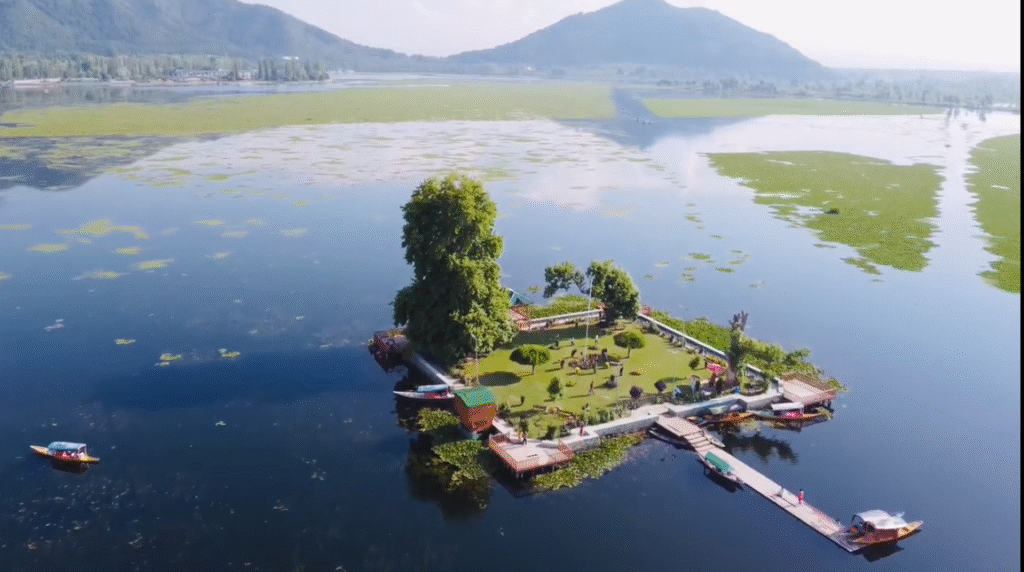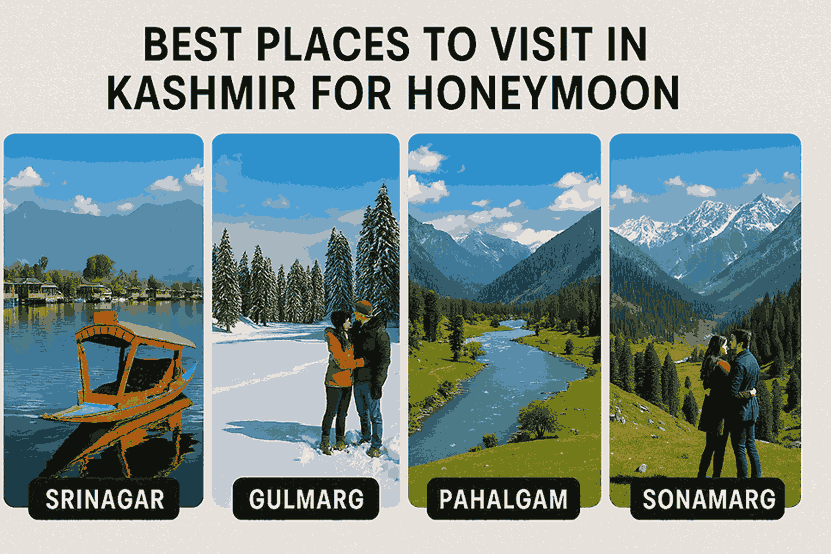Introduction to Howrah
Howrah, India, is one of the most prominent cities in West Bengal located on the western banks of the Hooghly River. Often referred to as the “Twin City of Kolkata,” it is best known for the world famous Howrah Bridge, bustling industries and rich cultural heritage.
Howrah is the second smallest district after Kolkata in the Indian state of West Bengal. It is also one of the highly urbanized area of west Bengal. The district is names after its headquarters , the city of Howrah.
Historically referred to as the “Sheffield of the East,” Howrah was known for its small to medium-scale engineering industries. With a population of over 1 million, Howrah Junction is India’s busiest railway station, handling more than 1,000 trains and serving over 1 million passengers daily.
History of Howrah, India
The history of Howrah dates back several centuries, with its significance growing during the British colonial era. As a major industrial hub and gateway to Kolkata, Howrah became famous for its railway station, jute mills and engineering industries.
The Howrah Bridge, completed in 1943, is not just an engineering marvel but also symbolizes resilience and unity. Its striking architecture reflects both heritage and innovation.
Many historical landmarks dot the cityscape. The beautiful temples showcase classical Indian architecture, with intricate carvings that tell stories from ancient scriptures.
Museums like the Howrah Museum house artifacts that chronicle local history and art forms, providing insight into the region’s past.
This blend of colonial influence and traditional culture creates a unique charm that attracts visitors seeking to explore more than just modern attractions.
Geography and Location
- Area: 1467 sq km.
- Population: 4,850,029
- Literacy Rate: 83.31%
- Blocks: 14
- Villages: 157
- Municipal Corporation: 1
- Police Station: 26
- Situated in West Bengal, India
- Lies along the Hooghly River
- Connected to Kolkata by iconic bridges such as Howrah Bridge (Rabindra Setu) and Vidyasagar Setu
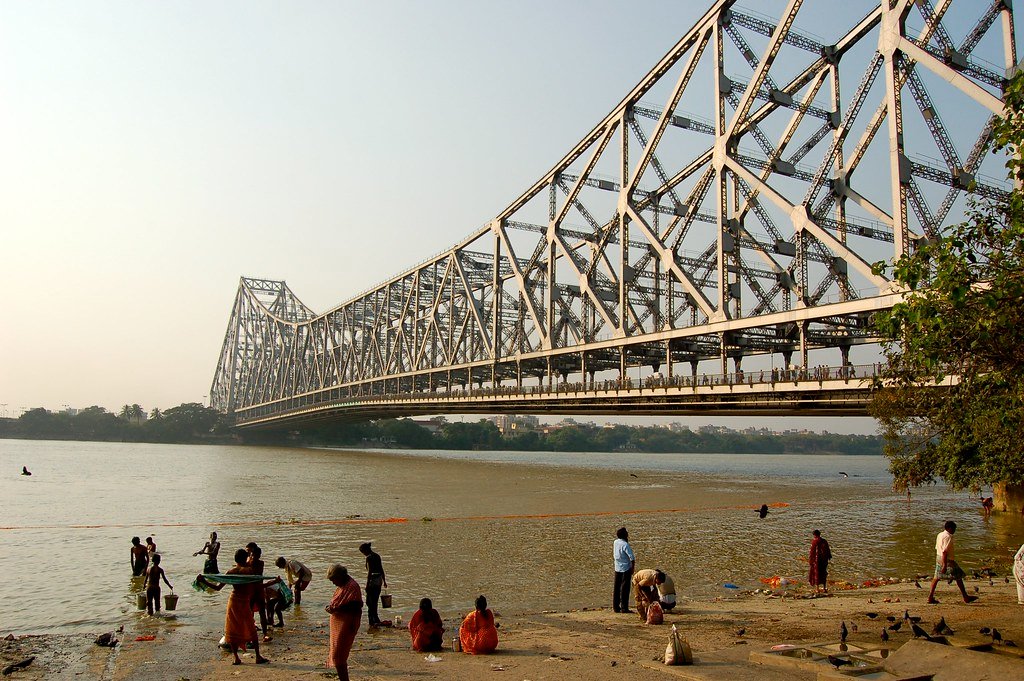
Famous Landmarks and Attractions in Howrah
Howrah tourism wouldn’t be complete without exploring some of the most identifiable and significant Howrah attractions in the city. These landmarks are essential parts of everyday life in Howrah city West Bengal and also serve as premier Howrah sightseeing spots, drawing countless visitors every year.
1. Howrah Bridge Kolkata (Rabindra Setu)
A global landmark and one of the busiest cantilever bridges in the world, connecting Kolkata and Howrah. It is one of the world’s longest cantilever bridges extending across the Hooghly River and is a famous symbol of West Bengal.
Officially named Rabindra Setu, this engineering marvel was commissioned in 1943, right in the middle of World War II and remains one of the busiest bridges in the world. it was constructed without a single nut or bolt and without any supporting pillars in the water, using over 26,000 tons of steel and held together by rivets alone.
Despite being a heritage structure, the Howrah Bridge remains one of the busiest cantilever bridges in the world by daily traffic volume. It carries over 100,000 vehicles and approximately 150,000 pedestrians every single day.
The bridge isn’t just an architectural marvel but also a symbol of the city’s strength and endurance, serving as the lifeline that connects Howrah with Kolkata. The panoramic views from the bridge also make it one of the most popular Howrah photography spots for both locals and travelers alike.
Facts about Howrah Bridge:
- The bridge was commissioned during World War II without a grand inauguration due to the fear of Japanese air attacks.
- The first vehicle to cross the new bridge was a tram.
- Tram services were discontinued in 1993 to reduce stress on the bridge deck caused by heavy vehicular traffic.
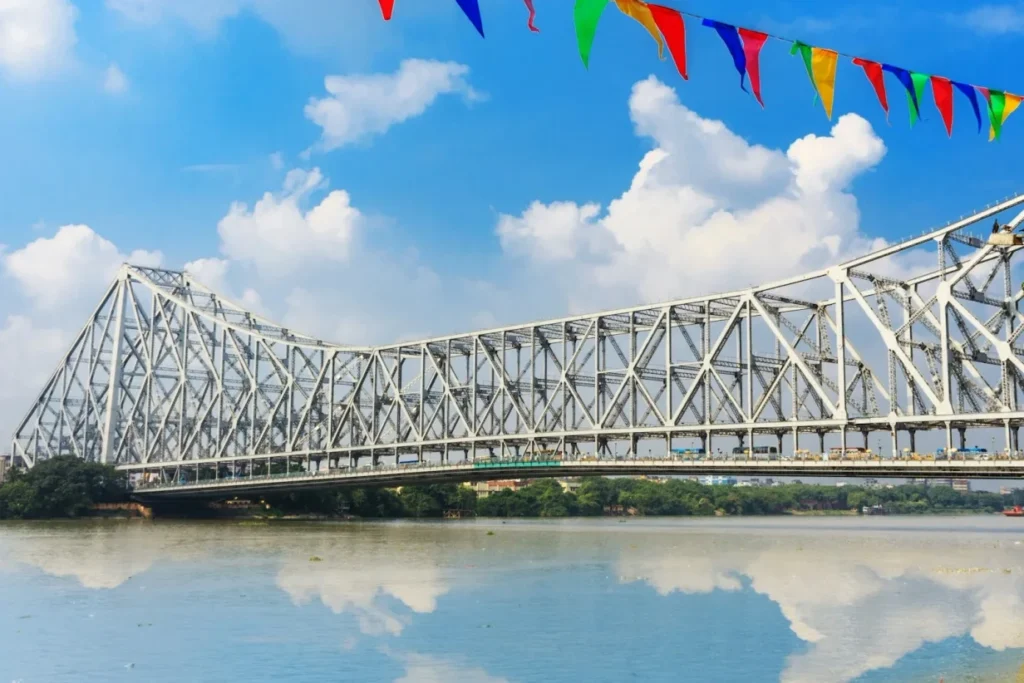
2. Howrah Railway Station
No visit to Howrah city West Bengal is complete without passing through the iconic Howrah Railway Station. Known for its grand red brick in a classical British style architecture and bustling atmosphere, it is one of the busiest rail complexes in the country. The very first passenger train in Eastern India departed from here on August 15, 1854, connecting Howrah to Hooghly.
The Howrah Railway station is credited with having the highest number of platforms in India (currently 23), giving it the largest train handling capacity in the country. This sheer scale is necessary to manage over 600 trains and an average daily footfall of over a million passengers.
A massive century-old “Boro Ghori” (Big clock) is a prominent feature on the old station building. It is a historical timepiece that serves as an enduring landmark and a traditional ‘Time Keeper of the Nation’ for commuters.
Facts about Howrah Railway Station
- The original station was built on land once owned by Portuguese missionaries, who ran an orphanage and a church there before it was acquired by the East Indian Railway Company.
- Howrah is among the very few railway stations in India with a public road running through its terminal complexes (Terminal 1 and Terminal 2), allowing vehicles to enter directly into the station premises.
- The station is a major terminus for two key Indian railway zones — Eastern Railway (ER) and South Eastern Railway (SER) — making it one of the busiest and most significant railway hubs in the country.
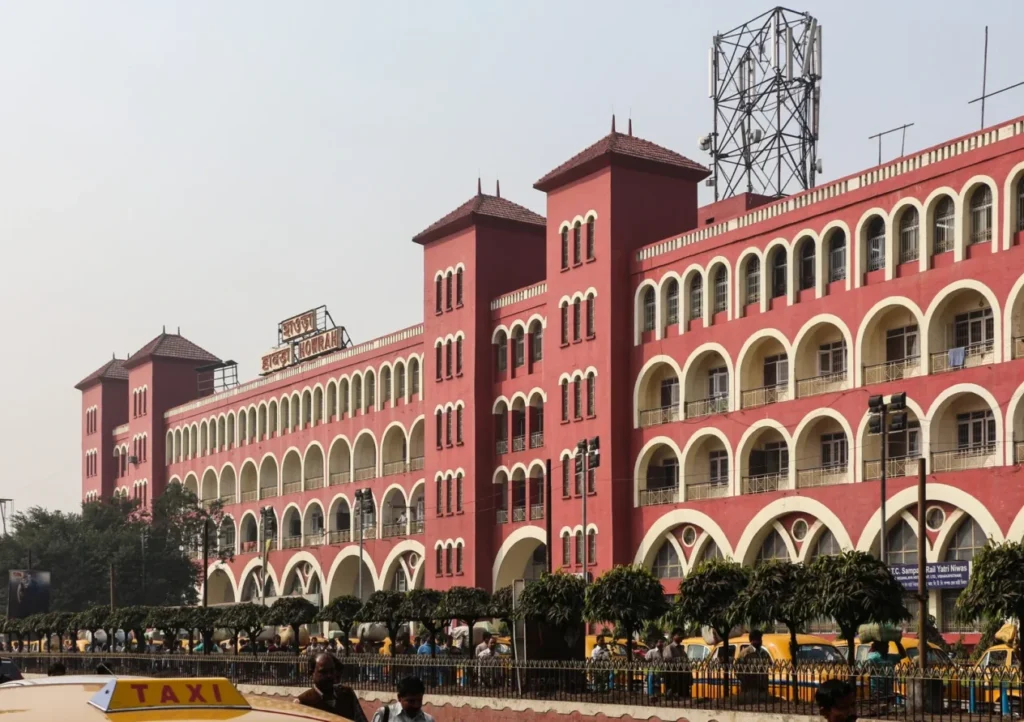
3. Belur Math: A Spiritual Sanctuary
Among the riverside attractions of Howrah India, Belur Math is unparalleled. Perched on the banks of the Hooghly River, Belur Math is the headquarters of the Ramakrishna. Its temple features a unique blend of Hindu, Islamic, Buddhist and Christian architectural styles. Established by Swami Vivekananda, its unique architecture represents the unity of all religions and serves as a tranquil retreat for meditation and learning.
Belur Math is high on the list of Howrah heritage sites and offers a refreshing escape from city life a must for anyone interested in Howrah cultural attractions and riverside beauty.
Facts about Belur Math
- Belur Math is the nerve center of the Ramakrishna Math and Mission, coordinating more than 200 centers worldwide dedicated to spiritual and philanthropic work.
- The complex enshrines the relics of Sri Ramakrishna, Holy Mother Sarada Devi, and Swami Vivekananda, the three principal figures of the movement.
- It stands as a living testament to the ideal “Service to man is service to God” (Jiva is Shiva), which forms the spiritual foundation of the Mission.
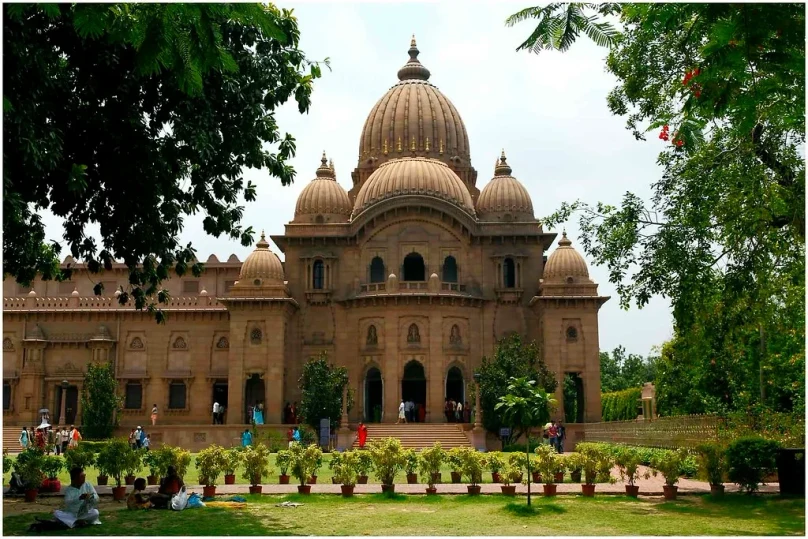
4. Botanical Gardens (Acharya Jagadish Chandra Bose Indian Botanic Garden)
The Acharya Jagadish Chandra Bose Indian Botanic Garden (formerly known as the Royal Botanic Garden, Calcutta) is one of the key Howrah sightseeing spots located in Shibpur and one of Asia’s oldest and largest botanical gardens, established in 1787. It is famous for the Great Banyan Tree, which has the largest canopy in the world.
As one of Howrah’s best riverside attractions, its vast collection of rare flora attracts botanists, students and tourists exploring West Bengal travel destinations and seeking peaceful moments amid greenery.
Facts about Indian Botanical Garden
- Founded in 1787 by Colonel Robert Kyd, the garden played a vital role in introducing crops like tea from China, mahogany, rubber, and cinchona into India.
- It is home to the Great Banyan Tree, recognized in the Guinness Book of World Records for having the largest canopy coverage of any single tree in the world (over 4.5 acres).
- Renamed in 2009 to honor Sir Acharya Jagadish Chandra Bose, the pioneering Bengali scientist.
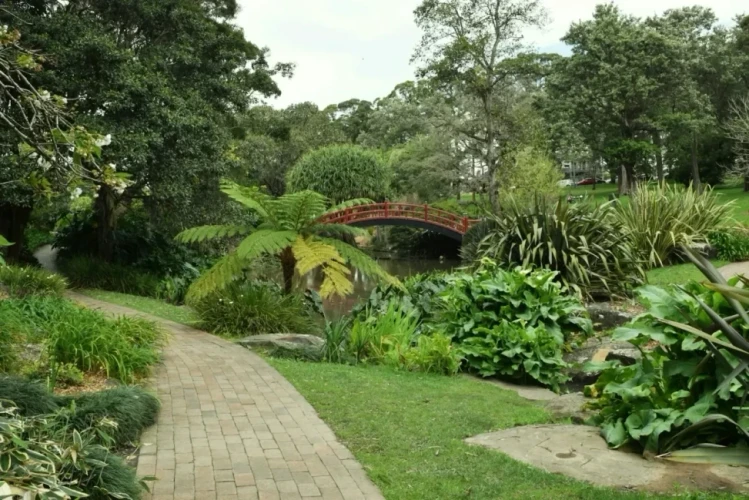
5. Santragachi Jheel
Among the famous Howrah tourism attractions, Santragachi Jheel stands out as a natural oasis perfect for Howrah day trips from Kolkata. From November to February, migratory birds turn this serene lake into a spectacle, drawing both wildlife enthusiasts and photographers. It’s also a wonderful place for families and groups to unwind, just one example of the city’s diverse sightseeing spots and a testament to Howrah’s ecological vibrancy.
This large lake and bird sanctuary attracts a variety of migratory birds, making it a popular spot for birdwatchers.
Facts about Santragachi Jheel
- Santragachi Jheel is a man-made lake that serves as a crucial urban wetland ecosystem in Howrah.
- It is an important wintering site for migratory birds, with annual bird censuses conducted to monitor species diversity and population.
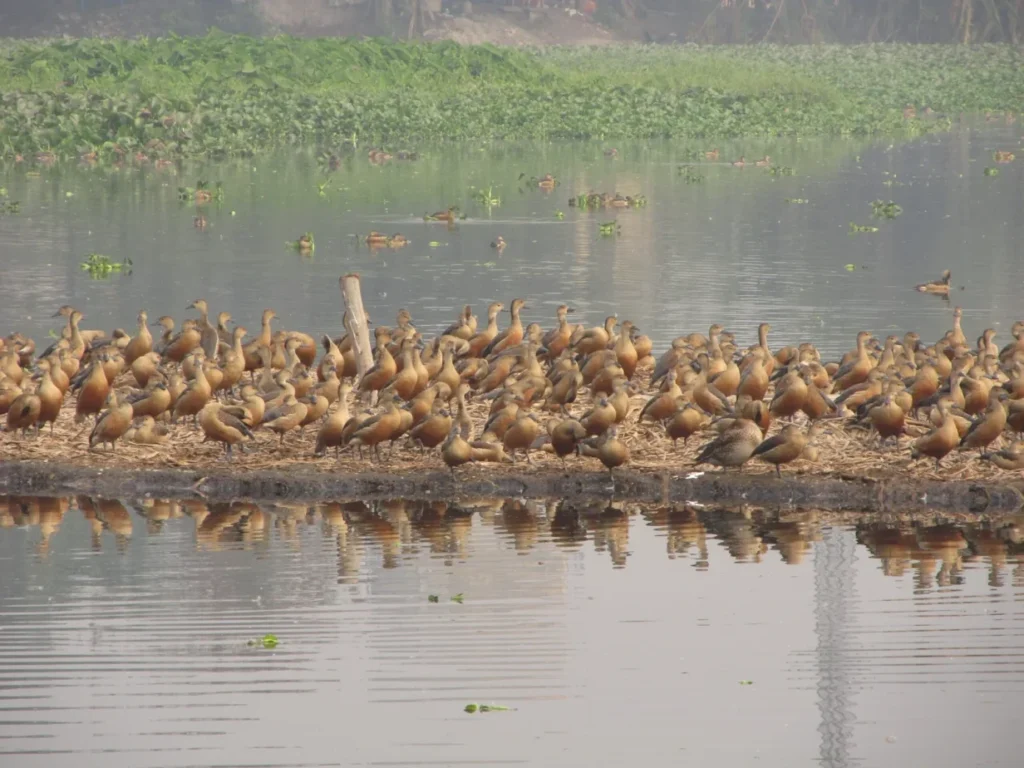
6. Avani Riverside Mall
Avani Riverside Mall is a prominent shopping, dining and entertainment destination located in agat Banerjee Ghat Road, Shibpur, Howrah, West Bengal, and is a major commercial hub for the area near Kolkata. Its strategic location offers easy connectivity from both Howrah and South Kolkata (via the Vidyasagar Setu/Second Hooghly Bridge).
It is notable for being situated near the Hooghly River waterfront, which offers a scenic backdrop, and for its unique status as an environmentally conscious building.
Facts About Avani Riverside Mall
- Opened in 2011, Avani Riverside Mall is one of the largest shopping destinations in Howrah.
- It is among the first malls in Eastern India to receive a “Platinum Rating” from the Indian Green Building Council (IGBC) for its eco friendly design and energy efficient management systems.
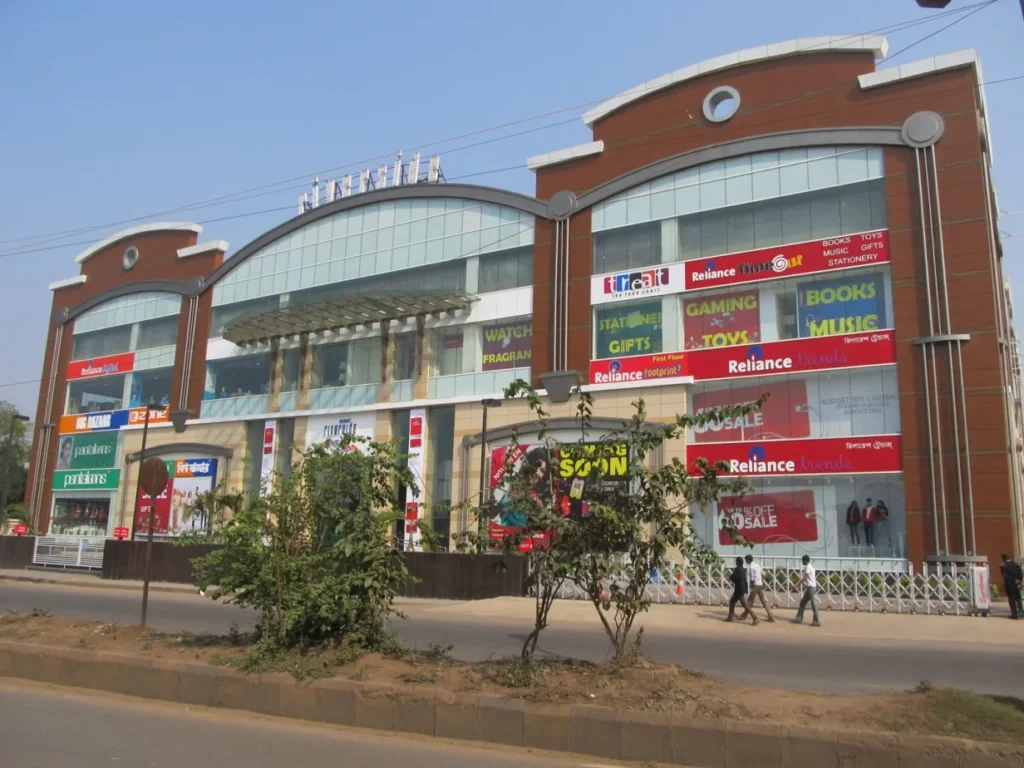
The Cultural Fabric and Best Things to Do in Howrah
Diving into the cultural heart of Howrah, India, you will quickly sense the city’s pulse deep rooted in tradition yet alive with modern energy. Food is one of the easiest (and tastiest) ways to experience it. From iconic Bengali sweets like rosogolla and sandesh to flavorful street snacks and hearty meals at local eateries, the food in Howrah is as much about comfort as it is about culture. Exploring these flavors often goes hand in hand with wandering through the lively Howrah shopping markets, where vendors, shoppers and aromas create an unforgettable atmosphere.
The city truly comes alive during its festivals. Whether it’s the grandeur of Durga Puja or the charm of local fairs, joining in the celebrations offers a glimpse into the warmth, artistry and spirit of the people. These occasions are not only cultural highlights but also some of the most memorable things to do in Howrah.
Shopping enthusiasts won’t be disappointed in Howrah because of modern malls, roadside bazaars and craft markets, there’s always something unique to take home. And when it’s time to slow down, nothing compares to a peaceful riverside stroll at sunset, where the Howrah riverside attractions provide a serene contrast to the city’s bustling streets.
Local Cuisine and Food Spots in Howrah
The Howrah city of West Bengal India is a food lover’s paradise. The bustling streets are filled with the aroma of delicious street food. From puchkas to kathi rolls, every corner offers something unique.
Don’t miss out on the famous Howrah fish curry. It’s rich and flavorful, served with steaming rice that locals swear by. For those craving something sweet, try the mishti doi or rasgulla from one of the many local sweet shops.
For an authentic experience, head to Dasnacchi Biryani for their signature biryani bowl packed with spices and tender meat.
You can also explore small eateries around Howrah Station where vendors serve piping hot chaats late into the night. Each bite showcases the vibrant culinary culture that defines this city.
Whether you are dining in a restaurant or grabbing snacks on-the-go, Howrah’s diverse cuisine reflects its rich heritage and lively spirit.
Shopping and Markets in Howrah
Howrah, a bustling hub in West Bengal, offers an exciting shopping experience for visitors. From vibrant local markets to modern malls, there’s something for everyone.
The Howrah Market is a must visit spot. Here, you will find everything from fresh produce to handcrafted goods. The lively atmosphere and the friendly banter of vendors create a unique shopping vibe.
For textiles lovers, the city is famous for its sarees and traditional wear. Shops lining the streets showcase intricate designs at reasonable prices. Bargaining is part of the fun!
If you prefer contemporary shopping centers, explore places like Avani Riverside Mall. It combines retail with entertainment and dining options that appeal to all ages.
Don’t forget to check out street food stalls near popular markets while you’re there! They offer delicious treats perfect for fueling your shopping spree in Howrah.
Cultural Events and Festivals
Howrah India is a vibrant tapestry of cultures and traditions. The city’s cultural calendar is filled with events that reflect its rich heritage.
Durga Puja stands out as the most celebrated festival here. Every autumn, elaborate pandals are constructed, showcasing stunning artistry. Locals come together to offer prayers and enjoy traditional music and dance.
Another highlight is the Howrah Mela, held annually. This fair presents an array of handicrafts, street food and performances by local artists. Visitors can immerse themselves in the flavors and sounds unique to this region.
Bengali New Year also brings joy to the streets of Howrah. Families dress in new clothes, share sweet treats like pitha and participate in community celebrations.
These festivals create a sense of unity among residents while inviting travelers to experience authentic Bengali culture firsthand.
Tips for Tourists Visiting Howrah
When visiting Howrah, be prepared for the hustle and bustle of this vibrant city. Always keep your belongings secure while exploring busy areas.
Dress modestly, especially when visiting temples or local markets. Respecting cultural norms will enhance your experience.
Public transport is a convenient option here. Consider using local buses or app-based taxis to navigate the streets comfortably.
Don’t forget to carry cash, as some small vendors may not accept cards. Bargaining is common in markets; don’t hesitate to negotiate prices for souvenirs.
Take time to chat with locals. They are often friendly and willing to share insights about their culture and traditions.
Hydration is key during warm days, so always have a water bottle handy. Street food can be tempting but ensure you choose clean stalls for a safe culinary adventure.
How to Reach Howrah
- By Train: Howrah Junction connects to major cities across India.
- By Air: Nearest airport is Netaji Subhash Chandra Bose International Airport in Kolkata.
- By Road: Well-connected via NH-16 and NH-2 to other parts of India.
Best Time to Visit Howrah
The ideal time to explore Howrah is between October and March, when the weather is pleasant and festivals are celebrated with grandeur.
Here are some Frequently Asked Questions (FAQs)
Howrah is famous for the Howrah Bridge, Howrah Railway Station, Belur Math, and its industrial importance.
Howrah is a separate city but often considered the twin city of Kolkata, connected by iconic bridges.
The Howrah Junction Railway Station is the oldest and one of the busiest in India.
The Hooghly River, a distributary of the Ganga, flows along Howrah.
Howrah Bridge, Belur Math, Botanical Gardens, Santragachi Jheel, and Howrah Station.
Howrah is a city and district located in the Indian state of West Bengal. It is the second-largest city in the state and serves as a headquarters for the Howrah district, which is one of the most urbanized areas in West Bengal.
The primary language spoken in Howrah is Bengali, which is the dominant language in the region and the official language of the state of West Bengal, where Howrah is located.
Howrah has two prominent nicknames: "Sheffield of India" and "Glasgow of India," reflecting its status as a significant light engineering hub and a twin city to Kolkata, similar to how Glasgow is to Sheffield.
The best time to visit Howrah is the winter season, from November to February. Temperature stays pleasant between a maximum of 29°C and a minimum of 12°C.
Create Your Perfect Kashmir Tour


